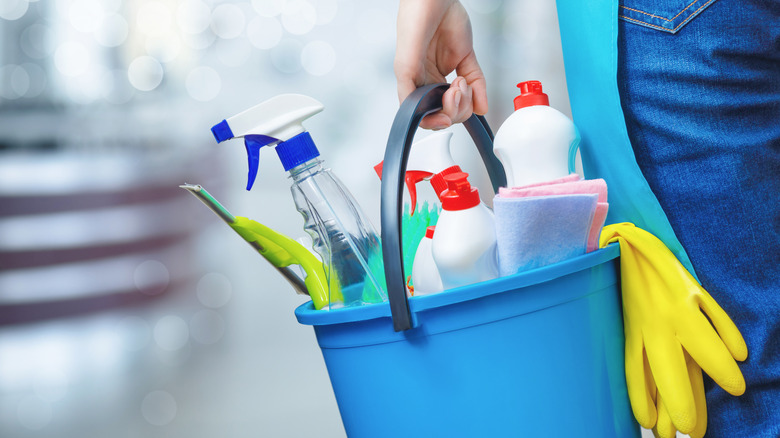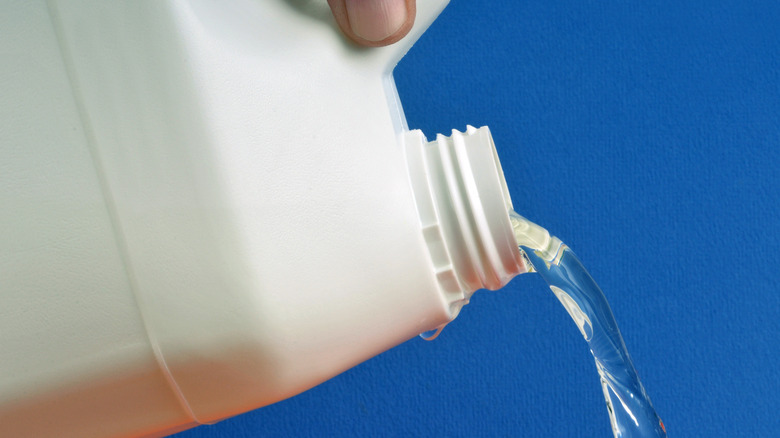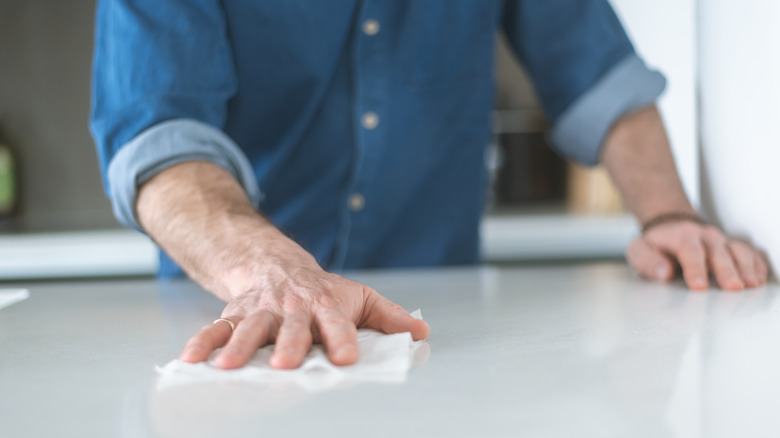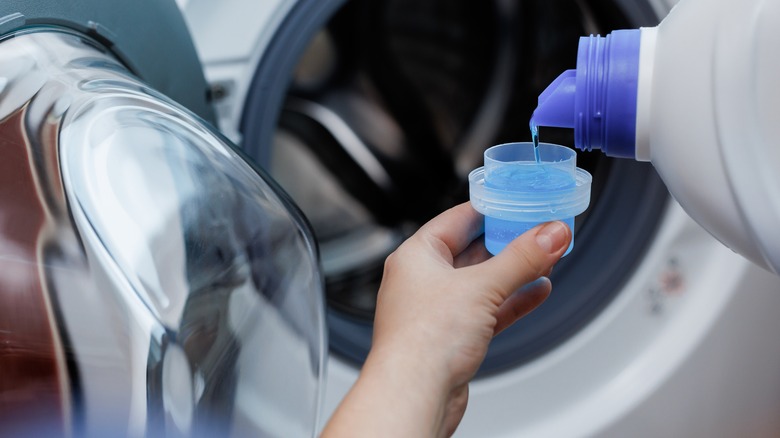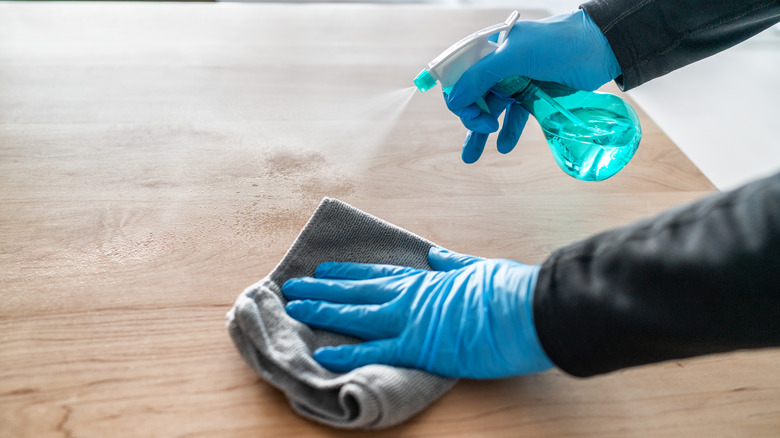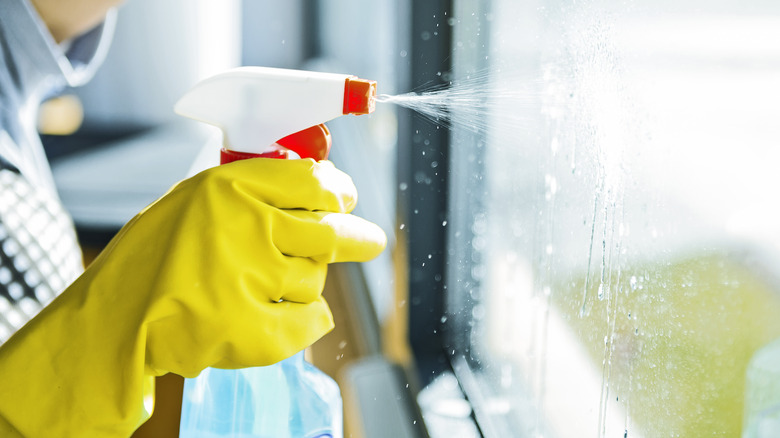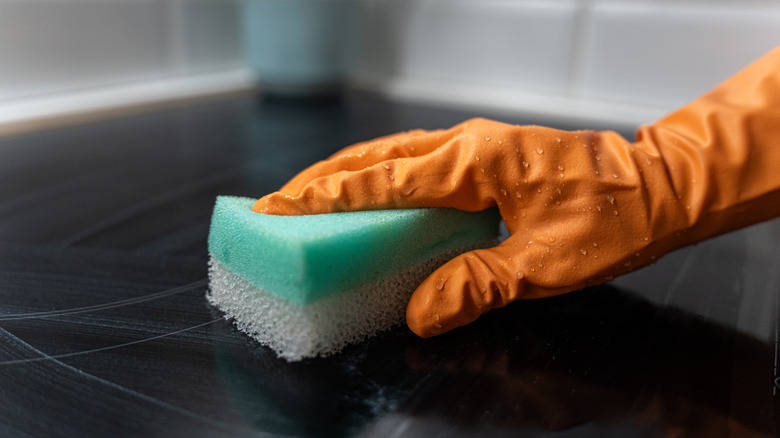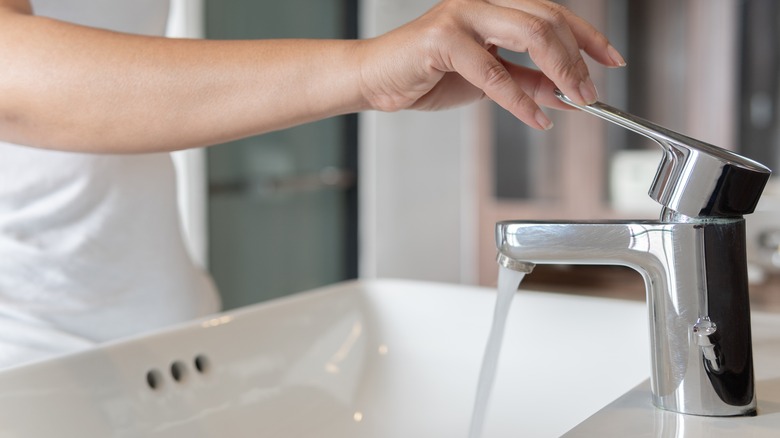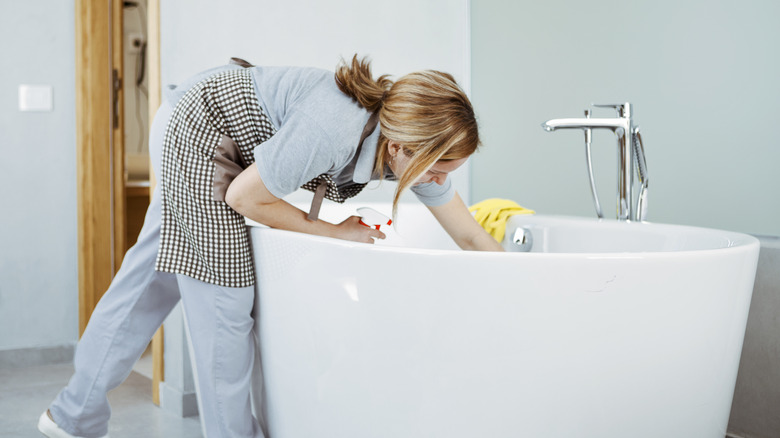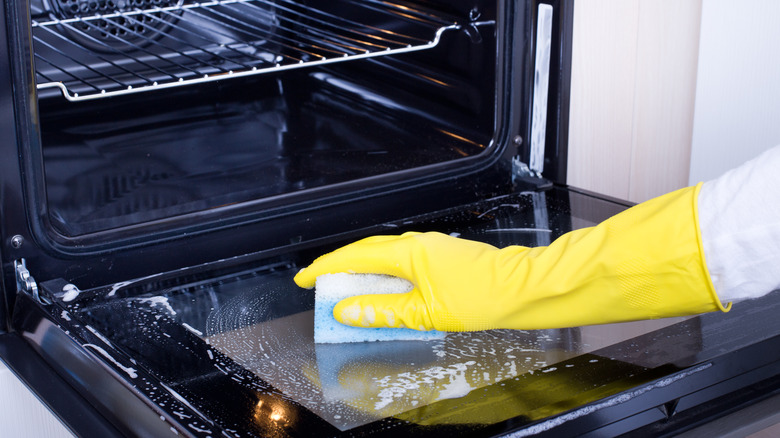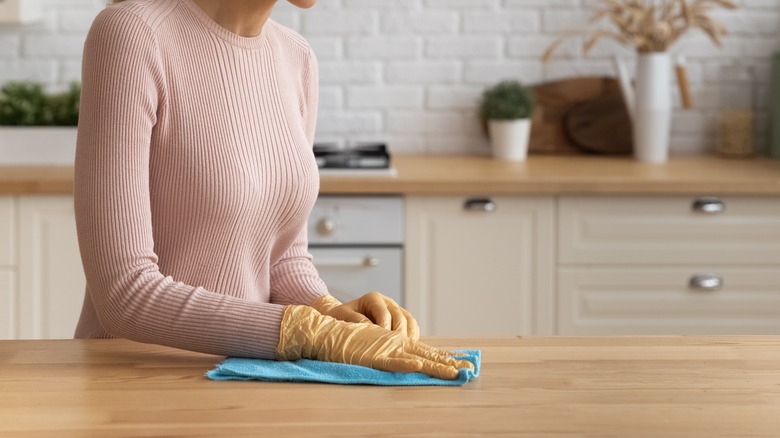10 Cleaning Products You've Been Using The Wrong Way All Along
Embarking on a cleaning spree can be both therapeutic and satisfying, especially when armed with an arsenal of trusty cleaning products. But what if we told you that some of these seemingly straightforward products have been misused for years? Have you ever wondered why your glass cleaner leaves streaks or why your all-purpose cleaner isn't quite getting rid of that stubborn mold? It turns out, the way we use these products often deviates from their optimal usage guidelines.
For instance, did you know that applying oven cleaner to certain parts of your appliance can damage your oven? Or, that using hot water with bleach can actually diminish its disinfecting power? Yes, even tried and true solutions may surprise you with their proper application techniques. From the mighty oven cleaner to the convenience of cleaning wipes, we uncover the hidden potential of these household staples and learn how to wield them effectively for a cleaner, brighter home.
Diluting bleach improperly can be problematic
Many individuals unknowingly misuse bleach, which jeopardizes both its effectiveness and safety. One common mistake is combining bleach with hot water, which can deactivate its active ingredients, diminishing its cleaning power. Additionally, some people don't dilute the bleach at all in a misguided attempt to enhance its potency. This can lead to both damage on surfaces as well as health hazards. Also, the failure to ventilate the area by keeping windows shut exacerbates the risks associated with bleach fumes.
To maximize bleach's efficacy and minimize risks, it should always be diluted with cold or room-temperature water. Following recommended ratios, 1:99 for everyday cleaning and 1:49 for disinfection, ensures optimal performance without compromising safety. Adequate ventilation, achieved by opening windows, is also essential to dissipate the harmful fumes. Keep in mind, there are certain things you should never clean with bleach. Surfaces like wood, children's toys, and electronic devices, can be damaged by the corrosive properties of the liquid.
Not using cleaning wipes thoroughly enough
Cleaning wipes are often misused, particularly when it comes to achieving proper disinfection. A common error lies in the application method, where users simply wipe the surface once and move on, assuming it's adequately cleaned. However, this quick pass means the surface dries too rapidly, not allowing enough contact time for effective disinfection. Disinfecting wipes require a certain amount of contact time with the surface to kill germs and bacteria. Neglecting this step can leave behind harmful pathogens on your surfaces.
In an interview with Today, Dr. Neha Pathak echoed the importance of using these wipes properly, stating, "We think of them as easy to use, but the problem is that they don't work unless you use them properly." The solution lies in using multiple wipes to ensure the surface remains wet for the recommended duration. For example, both Clorox and Lysol wipe labels indicate that surfaces should remain wet for at least four minutes to achieve proper disinfection.
Using too much laundry detergent
Laundry detergent, a staple in every household, is often used incorrectly, leading to less-than-desirable results when cleaning clothes. One common mistake is the excessive use of detergent, believing that more soap equates to cleaner clothes. However, using too much detergent can result in a surplus of suds. This can hurt the washing machine's ability to scrub and rinse the garments effectively. Extra detergent can also leave behind a stubborn residue on clothing fibers, causing them to feel crunchy and scratchy rather than soft and fresh.
The solution to this all-too-common laundry dilemma lies in understanding the appropriate amount of detergent needed. Many experts explain that you only need about a tablespoon or two of detergent per load. However, it is important to note that the recommended amount may vary among different brands and types, such as powder and liquid laundry detergents. Additionally, the manufacturer's guidelines on the detergent bottle could be excessive. As Sara Bodgan aptly points out in a Wirecutter video, "Some detergent manufacturers, they're going to lie on the label. But remember, they're selling a product, and they want you to buy more of it."
Using all-purpose cleaners for everything
All-purpose cleaner, known for its versatility, often falls victim to misuse as people attempt to use it for every cleaning task under the sun. Many people rely solely on these products to tackle many areas, from countertops to bathroom surfaces. However, this one-size-fits-all approach overlooks the fact that it may not be suitable for some cleaning tasks.
When it comes to all-purpose cleaner, it is important to recognize its limitations and know how to use it appropriately. While it's great for general surface cleaning, it should not be used for your entire home. In an interview with Apartment Therapy, Melissa Maker, founder of Clean My Space, highlights the importance of tailoring your cleaning approach to the specific task at hand. "I trust all-purpose cleaner, but if there are specific germs you need to clean up, bring out a disinfectant."
There are many things you actually shouldn't clean with an all-purpose solution. For example, cleaning glass surfaces with an all-purpose cleaner may leave streaks and smudges behind, requiring a specialized glass cleaner for the best results. Similarly, trying to tackle mold or mildew with this product is ineffective, as it lacks the necessary disinfecting properties to combat these issues. Likewise, for heavy-duty cleaning tasks like scrubbing the shower or bathtub, a more potent cleaner, such as a mixture of dish soap and baking soda, may be required to effectively tackle grime and soap scum buildup.
Misapplying glass cleaner can cause streaking
Glass and window cleaner, which is a popular go-to for achieving streak-free shine, is often misapplied, resulting in mediocre results. Many people make the mistake of using too much cleaner, dousing windows and mirrors in hopes of achieving a sparkling finish. However, this approach often backfires, leaving behind streaks and residue instead of the desired pristine finish. Additionally, many people reach for paper towels to wipe away the cleaner, unaware that the fibers can detach and leave behind lint on the glass surface.
To use glass and window cleaners effectively, you'll want to make sure you use the product in moderation while also choosing the right tools for the job. First, you'll want to spray as you go. If you use too much cleaner, the solution will dry on the window, causing streaks. Also, opting for a microfiber cloth instead of paper towels provides a lint-free cleaning experience, ensuring a beautiful finish without any unwanted residue. Alternatively, if paper towels are your preference, make sure they are lint-free, or consider using newspaper.
Instead of glass cleaner, vinegar may be the secret to dazzling clean windows. This common ingredient is a cost-effective and eco-friendly alternative, providing similar effectiveness without the use of harsh chemicals. Its acidic properties help dissolve grime and grease, leaving windows sparkling clean and streak-free.
Cross-contaminating with sponges
Using sponges incorrectly can lead to potential hygiene hazards. Some homeowners make the mistake of using the same sponge for multiple cleaning tasks, such as washing dishes, wiping down countertops, and scrubbing spills off the floor. However, you should think twice about reusing that same sponge around the house. This practice can lead to cross-contamination as the sponge picks up bacteria from different surfaces without proper cleaning in between uses.
This issue can be avoided by either designating separate sponges for different tasks or ensuring regular disinfection of the sponge. Experts recommend cleaning sponges once or twice a week, either by running them through a full dishwasher cycle or wetting them and microwaving them for one minute. These methods effectively kill 99 percent of germs, ensuring that your sponge remains hygienic and safe to use. Additionally, it is important to replace sponges every one to two weeks, even with proper cleaning, to prevent bacteria from accumulating over time.
Using water to clean wood surfaces can cause damage
Water, which is often considered to be the simplest and most natural cleaning solution, is frequently misused, especially when it comes to cleaning hardwood floors. Many people use too much water during the cleaning process, which can have detrimental effects on hardwood surfaces. Excessive water can seep into the wood's pores, causing it to swell and eventually warp, leading to costly damage and repairs.
If you prefer to use water for cleaning, make sure you exercise extreme caution. Natalie Wise, author of "The Natural Home: Tips for Cleaning With Natural Ingredients," advised Today on how to properly clean wood floors with water. "Begin by dusting or sweeping your floors well. Then, make a cleaning mixture using 4 cups warm water and a few drops of castile soap or dish soap. Thoroughly mop or scrub small sections at a time, drying them with a clean cloth or dry mop after. You don't want to let any water sit as you're cleaning your hardwood floors, so be sure to work in one small area at a time."
To avoid damage to your floors, it is essential to adopt proper cleaning techniques for hardwood. While a little water is typically fine, your best bet is to opt for highly-rated hardwood floor cleaners to keep them looking like new. These formulas are designed to remove dirt and grime without risking damage to the wood.
Not allowing bathroom cleaner to penetrate
Using foaming cleaner incorrectly is one of the biggest bathroom cleaning mistakes that may be making your space unhygienic. Some people do not allow foaming cleansers enough time to thoroughly penetrate and disinfect surfaces. Many formulas actually require several minutes of contact time to effectively clean and sanitize, so rushing through the process doesn't allow for the full benefits.
To rectify this, it is essential to follow the proper application directions. Shake the can well and apply the foam cleaner to the designated surface, ensuring even coverage. Allow the product to sit for the recommended amount of time, allowing it to work its magic breaking down dirt and grime. Then, use a microfiber cloth to wipe down the surface, rinsing frequently throughout to remove any residue.
It is also crucial to use separate cloths for different areas such as the shower, sink, and toilet when cleaning the bathroom. Angela Richardson, founder of cleaning product line Pur Home, said in an interview with The Washington Post, "There are different bacteria and fluids in each of those different places, so you don't want to cross-contaminate as you're cleaning. That defeats the purpose."
Using oven cleaner on lights, knobs, and heating elements
Oven cleaner, a powerful ally in tackling baked-on grease and grime, is often used in the wrong way. When cleaning the oven, many people spray the cleaner directly onto heating elements, oven lights, and knobs. This exposes these sensitive parts to moisture that can cause damage or malfunction. Ron Shimek, president of Mr. Appliance stated in an interview with Real Simple, "The liquid could get behind the knobs and switches and short out the control panel." Additionally, similar to other cleaning products, many users fail to leave the oven cleaner on for the appropriate amount of time, diminishing its effectiveness in breaking down stubborn residues.
To address these issues, it's essential to adopt proper cleaning techniques when using an oven cleaner. First, avoid spraying cleaner directly inside of these components. Shimek advises users to, "spray a rag with liquid cleaner and then rub the controls to prevent shorting." Additionally, make sure that you leave the oven cleaner on for the recommended amount of time as specified on the label. This will make grime and grease easier to wipe away in the end. Due to the potent chemicals present in oven cleaners, it is advisable to open a window or turn on ventilation to minimize exposure to the fumes.
Using excessive amounts of furniture polish
If done incorrectly, polishing your wood furniture may be doing more harm than good. Many users over-polish furniture, applying excessive amounts of polish in an attempt to achieve a glossy finish. However, this excess product doesn't effectively clean your furniture. Instead, it can create an adhesive layer that attracts more dirt and dust.
To avoid these pitfalls, it is important to make sure you are using the right cleaning techniques. First, invest in microfiber cloths or a microfiber duster, as they are more effective at capturing dust without scratching your furniture. Before applying the polish, use your cloth to remove any surface dust or debris.
When it comes to applying the polish, less is more. Instead of spraying polish directly onto the surface, apply a small amount onto your cloth and gently buff the surface. Additionally, it's a good idea to limit polishing to about once a month. This will help to prevent overpolishing and maintain the furniture's appearance without attracting more dust.
